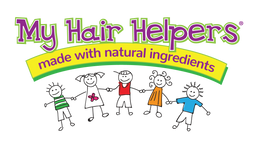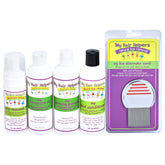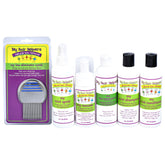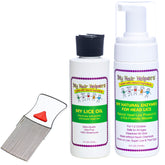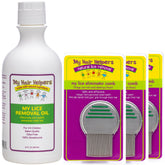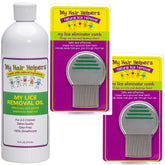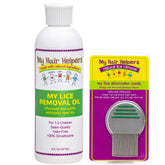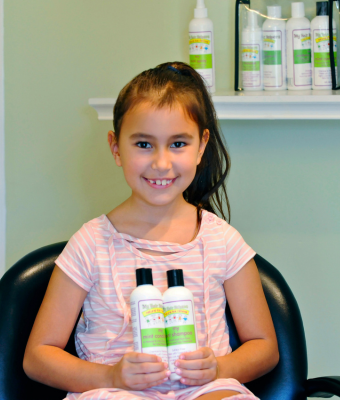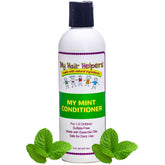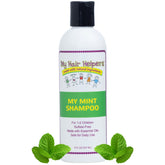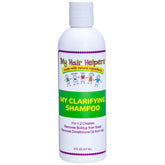LICE FACTS FOR PRESCHOOLERS

Lice can be an unwelcome visitor in any home, especially when you have a preschooler. These tiny pests are common among young children, who often engage in close play and share personal items. While lice might seem scary at first, understanding them can help parents effectively manage and prevent infestations.
Here are some key lice facts tailored to help parents of preschoolers.
What Are Lice?
Head lice are tiny insects that live on the scalp and feed on human blood. They are about the size of a sesame seed and can be white, gray, or tan in color. Lice are not dangerous and do not spread diseases, but their bites can cause itching and discomfort. Without treatment, young children might scratch at the bites, leading to secondary infections.
How Do Lice Spread?
Lice spread primarily through head-to-head contact, which is common in preschool settings where children hug, play, and sit close together. Since lice can crawl fast, it doesn’t take long for them to transfer to another head. They can also spread by sharing items like:
- Hairbrushes or combs
- Hats or scarves
- Pillows or bedding
What Are the Signs of Lice?
The most noticeable symptom of lice is an itchy scalp, especially behind the ears or near the neckline.
You might also notice that your preschooler has:
- Red bumps or irritation from scratching
- Tiny white or yellowish eggs (nits) stuck to the hair shafts
- Lice crawling on the scalp (though they move quickly and can be hard to see)
Can Lice Jump or Fly?
No, lice cannot jump or fly. They move by crawling, which is why direct head-to-head contact is the primary way they spread. But don’t underestimate the power of lice, as they can crawl at a speed of 3 to 4 inches per minute! Impressive, we know!
Head Lice Tips for Preschoolers
While there is no way to stop head lice 100% of the time, there are steps you can take to reduce the risk:
- Teach your preschooler not to share personal items like hats or scarves.
- Tie long hair back in a ponytail or braid and spray it with an anti-lice spray.
- Regularly check your child’s scalp, especially after play dates or group activities.
- Educate your preschooler about personal space without making them anxious.
Myths About Lice
There are many misconceptions about lice. However, all these do is cause excessive worry among parents. For example, many people assume that lice prefer dirty hair, and therefore, having lice is a sign of poor hygiene. However, lice don’t care about cleanliness. All they need is a scalp to survive, so if you have one, you can get lice.
Another myth is that household pets like dogs and cats can spread lice. Again, this is not true. Lice only live on humans, so pets cannot catch or spread them. That being said, pets have their own types of lice they can get. Lice are species-specific, so pets can’t get human lice and humans can’t get pet lice.
Lastly, lice do not spread diseases. Sure, they are a nuisance, but they don’t cause illness like body lice can.
Addressing Lice in Preschoolers
If you discover lice, don’t panic! Here are some steps you can take:
- Use a lice shampoo or natural remedies such as dimethicone oil. Anything from My Hair Helpers is guaranteed to be safe and effective for a preschooler.
- Comb through the hair with a fine-toothed lice comb to remove nits and lice.
- Wash clothing, bedding, and stuffed animals in hot water to kill any lingering lice or eggs.
- Vacuum furniture and carpets where your child may have rested their head.
When to Inform the Preschool
If your preschooler has lice, notify their teacher or daycare provider. This allows them to alert other parents and take precautions to prevent further spread. Don’t be embarrassed—lice can happen to anyone. Keeping an infestation quiet allows it to spread, which increases the chances for re-infestation.
Keeping Calm: Lice Are Manageable
Dealing with lice can be stressful, but it’s a common issue that many parents face. With proper prevention and prompt management, you can quickly eliminate lice and help your child return to their normal, itch-free routine. Lice might be a fact of life, but they don’t have to disrupt yours.
By staying informed and proactive, you can handle lice infestations with confidence and keep your preschooler happy and healthy. Place your order today for My Hair Helpers lice shampoos, conditioners, sprays, and more!
